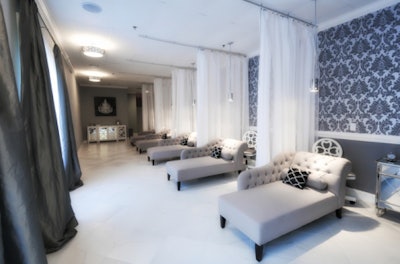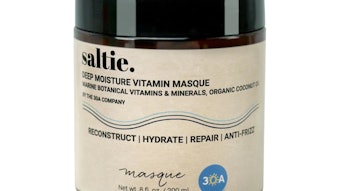
From coast to coast, eyelash extensions are all a-flutter. But would they make a positive addition to your spa menu?
The business of eyelash extensions is booming: In 2012, research company Mintel noted that 52 percent of women surveyed regularly obtain eyelash extensions or tinting. That same year, Women’s Wear Daily wrote that lash enhancements were leading sales growth in the beauty industry, and Fox News claimed that businesses banked more than $55 million from lashes in 2014. These numbers will likely continue to grow in the years ahead—but is this in-demand service right for you? Here, spa owners detail how to start a successful lash enterprise and keep it running at peak performance.
First things first: How do you determine the demand for lash extensions at your spa or salon? Paul Labrecque Salon & Spa was swept into the movement about five years ago and now employs two full-time lash technicians to cover its three New York City locations, plus one full-time tech for its Philadelphia outpost. “We saw real demand for lash services: Our makeup team was fielding daily requests,” says CEO Brian Cantor. “In our experience, very few people getting their hair and makeup done don’t want lashes, so we sought a more permanent solution. Now, it’s so popular, it’s unbelievable.”
FACES Day Spa in Hilton Head Island, South Carolina, started offering lash extensions around the same time, when a new manager, Alexis Sargo, raved about the service’s popularity. “Through research, I saw it was taking off ,” recalls Patricia Owen, FACES president. “But we had no idea it would be so successful!” Within two years, the service had positively overtaken the spa’s treatment rooms, so two lash beds were set up near the retail area. But soon even those were fully booked, and lashes again spilled into spa rooms—eventually prompting Owen to open a stand-alone lash bar, FACES Lash Studio, in the same shopping center.
Milk + honey spa, with locations in Houston and Austin, Texas, introduced lash services in 2008 to meet client requests. “I would recommend that spa owners who are considering offering lash services survey their current clientele to gauge interest,” advises Summer Smith, managing director of operations. “Also, make sure to do a competition comparison when determining your menu offerings and prices.”
A well-trained staff remains key—after all, they’re working with the über delicate eye area. At milk + honey, management requires that technicians undergo initial training from a professional brand. “We have an educational fund for employees, so we’ve brought in trainers to teach several people at a time, for a discounted cost per person,” says Smith. “Other estheticians travel elsewhere to obtain certification.” After certification, technicians can perform basic extension services, although many seek ongoing training outside the salon to advance their skill sets or learn new techniques.
Meanwhile, Sargo received certification and now trains other FACES technicians, thereby ensuring quality and consistency. Basic training takes a minimum of four weeks, after which proven newbies can hit the floor as “junior stylists” for more practice—a crucial component of continued learning. Existing staff may even move to lashes exclusively, full or part time. But there are risks involved: “We’ve successfully trained a half-dozen technicians who then started their own businesses or left to work for someone else,” Owen relates. “All lash stylists must sign an agreement with a noncompete clause when they’re hired, but the clause is only for Hilton Head. With lashes, you invest a lot of time and money in training. So we’re looking at ways to ensure lash techs don’t leave as soon as they’re qualified.”
Cantor, too, cautions that performing lash extensions is laborious and time consuming, and not every technician will succeed. “I’ve sent 8 to 10 people for training, and only two have been able to perform the service permanently,” he says. Cantor typically recruits employees to learn lashing and pays for their training.
Whatever your setup, you must ensure staff members comply with regulations surrounding lash licensing, which vary among states. Many require lash techs to hold an esthetician or cosmetologist license, while Texas and Minnesota have instated a lash-only license. (Check with your state’s Board of Cosmetology for requirements.) For her part, Owen reports that she didn’t need additional insurance when launching her new lash services.
When it comes to creating the right environment for lash services, many spas, including Paul Labrecque and milk + honey, simply utilize their traditional treatment rooms. However, making space is a must. “Any room will do, as long as there’s a magnifying lamp and table available,” Smith says. “A freestanding lash bar would work for space-challenged businesses, but we felt that it would take away from the spa experience.” Owen agrees that setting aside an area for lashing is simple and requires relatively little investment. “You don’t necessarily need to worry about separate rooms, soundproofing, cabinets, etc.,” she explains. “We actually have chaise lounges rather than treatment beds in our lash studio.”

Meanwhile, Labrecque’s treatment rooms are allocated to makeup artists based upon availability, and all rooms are staffed 100 percent of the time, so scheduling requires a juggling act. “Clients are often given a choice of times, because the technician needs a treatment room with a magnifying lamp,” Cantor notes. “We educate the front desk person to never say no to a client; instead, they say, ‘Let me see what I can do; I’ll give you some options,’ based on room availability.”
When setting a price for lash services, be sure to do your homework. Milk + honey surveyed comparable businesses, plus lash bars and smaller facilities. “We have a per-minute average cost for our spa services, so we stuck to that algorithm for our lash pricing,” Smith says. “To keep costs down, we analyze sales, backbar and technician costs, and so on, on an annual basis.”
Owen also recommends doing some market research, both locally and nationally. FACES offers different looks at various price points: Coy (natural) for $99; Captivating (longer and fuller) for $119; and Catwalk (glamour girl) for $149. Owen’s supply costs are minimal; her main expense is labor. Cantor charges top dollar for his premium services: Full sets require two hours of labor, plus product costs, and clients pay $350, then $150 to $200 every three to four weeks for touch-ups. “I’d recommend lashes to anyone with a full-service business,” Cantor says. “If you have makeup artists, it’s a no-brainer—and a great way to make money.”
Read the full article on Dayspa Magazine.
–by Tracy Morin











